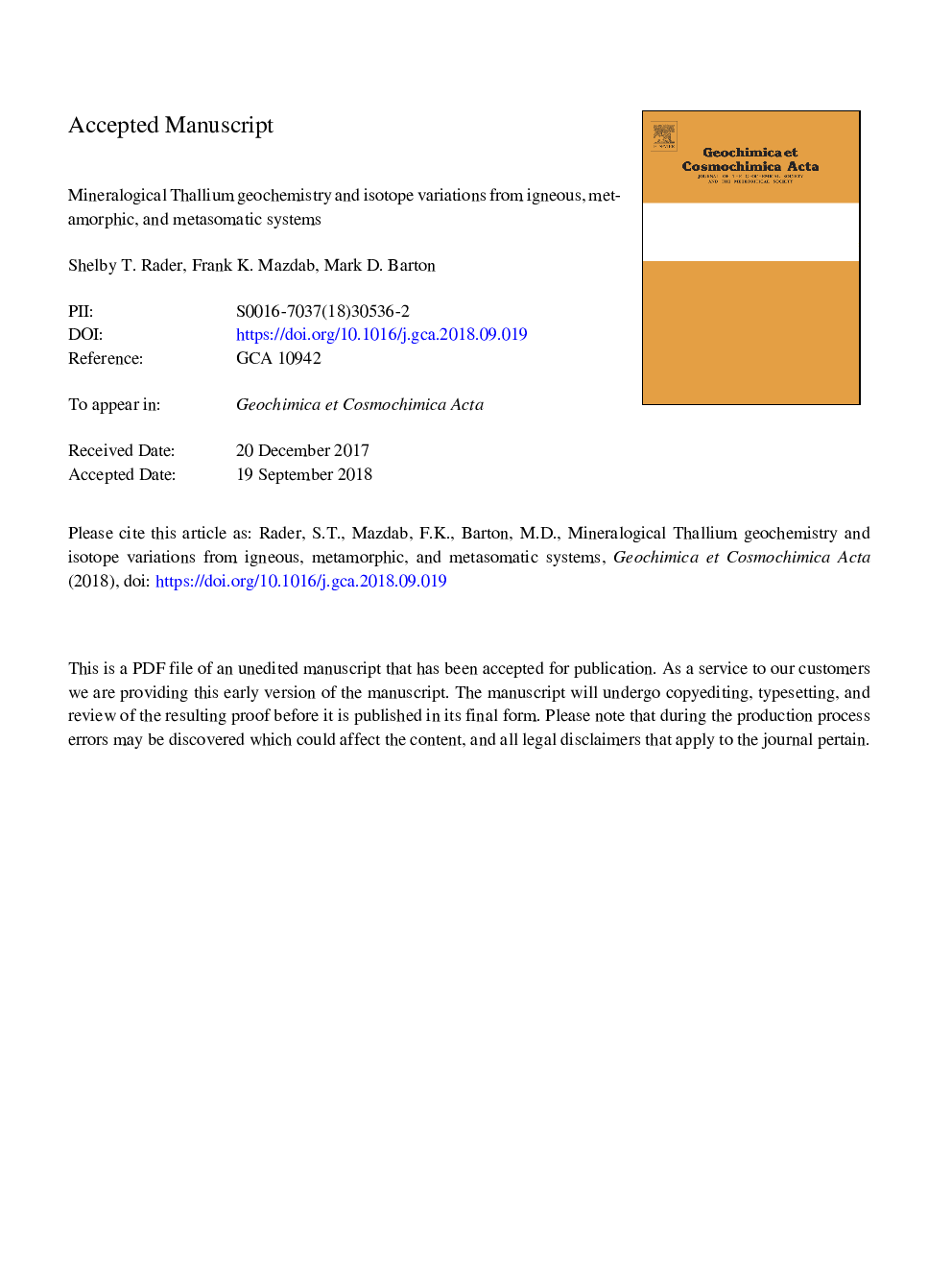| Article ID | Journal | Published Year | Pages | File Type |
|---|---|---|---|---|
| 11001904 | Geochimica et Cosmochimica Acta | 2018 | 57 Pages |
Abstract
The patterns in enrichment are best interpreted to reflect crystal chemical differences and the incompatible, dominantly lithophile nature of Tl. In turn, isotopic fractionation also reflects control by the bonding environment as well as redox conditions. The preferential distribution of Tl into micas and K-feldspar found here is consistent with the similarity in charge and ionic radius of Tl+ and K+. The higher ε205Tl values in sulfides agree with previous observations and theoretical studies showing the tendency of covalent bonds, high bond strengths, and high oxidation states to favor heavy isotopes. This work highlights important areas for future research regarding the natural weathering of Tl-bearing substrates, understanding regional cycling of Tl, and potential bioremediation of Tl contamination.
Keywords
Related Topics
Physical Sciences and Engineering
Earth and Planetary Sciences
Geochemistry and Petrology
Authors
Shelby T. Rader, Frank K. Mazdab, Mark D. Barton,
